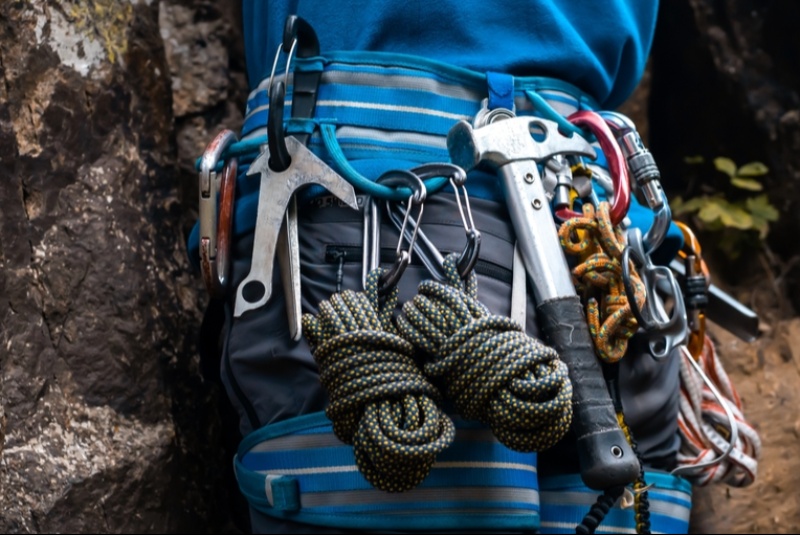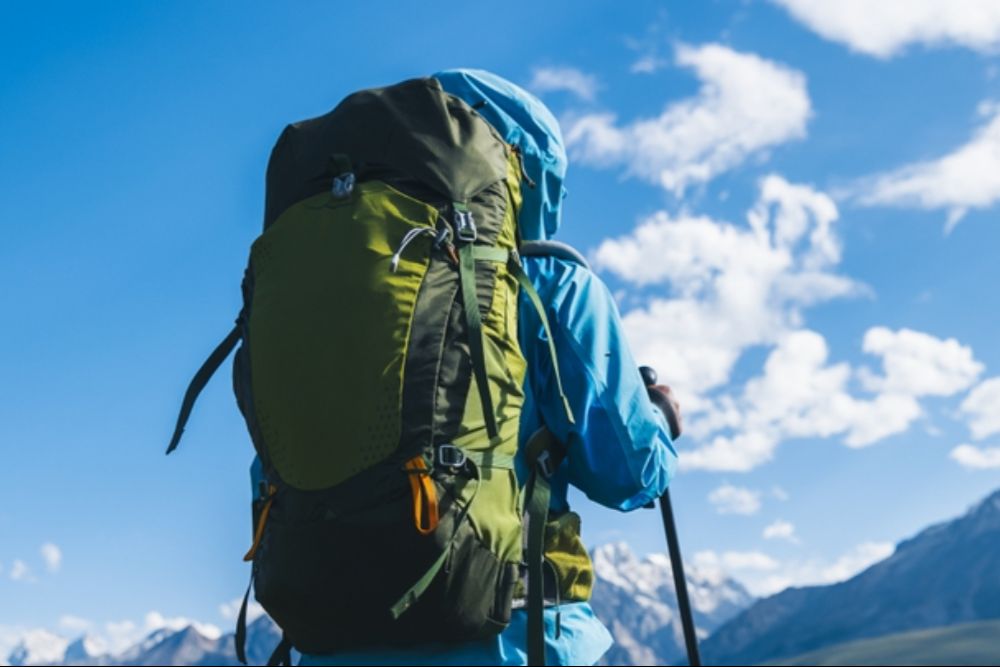Outdoor climbing offers an exhilarating way to connect with nature and challenge yourself physically and mentally. Whether you're a seasoned climber or a beginner, having the right gear is crucial for safety and success. This comprehensive guide covers the essential outdoor climbing gear, from harnesses to helmets, and provides tips on choosing and maintaining your equipment. Prepare yourself for climbing adventures with confidence and ensure your gear meets the highest standards for performance and safety.
Climbing Harness
A climbing harness is a vital piece of gear that secures you to the rope and protects you in the event of a fall. Harnesses come in various designs, including adjustable leg loops, padded waist belts, and gear loops for carrying equipment. When choosing a harness, ensure it fits comfortably and securely, with adjustable features to accommodate different clothing layers. The harness should distribute weight evenly and allow freedom of movement. Regularly inspect your harness for signs of wear and tear, and replace it if any damage is detected. A reliable harness is essential for a safe climbing experience.
Climbing Rope
Climbing ropes are your lifeline when ascending and descending routes. There are two main types: dynamic ropes, which stretch to absorb the impact of a fall, and static ropes, which have minimal stretch and are used for rappelling and hauling gear. When selecting a rope, consider its diameter and length based on your climbing style and terrain. Thicker ropes offer more durability, while thinner ropes are lighter and easier to handle. Regularly inspect your rope for cuts, abrasions, or fraying, and store it properly to prolong its lifespan. A high-quality climbing rope ensures safety and reliability on the rock.
Climbing Shoes
Climbing shoes provide the grip and precision needed for various climbing surfaces. They come in different styles, including neutral, moderate, and aggressive, each suited for different climbing disciplines. Neutral shoes offer comfort for all-day wear, while aggressive shoes have a downturned shape for maximum performance on steep terrain. When choosing climbing shoes, ensure a snug fit without causing discomfort. The rubber sole should provide excellent traction and sensitivity. Regularly clean and inspect your shoes to maintain their performance. Proper climbing shoes enhance your ability to tackle challenging routes and improve your overall climbing experience.
Climbing Helmet
A climbing helmet protects your head from falling rocks, gear, and impacts during falls. Helmets are designed with a hard outer shell and an inner foam lining to absorb shocks. Look for helmets that meet safety standards and provide adjustable straps for a secure fit. Ventilation is also important for comfort during warm weather climbs. Ensure your helmet fits snugly without obstructing your vision or movement. Regularly check your helmet for cracks or damage and replace it if compromised. Wearing a helmet is crucial for safety in all climbing environments, providing essential protection against head injuries.
Belay Device
A belay device is used to control the rope during belaying, allowing the belayer to manage the climber’s safety. There are various types of belay devices, including tubular, assisted-braking, and figure-eight devices. When choosing a belay device, consider its compatibility with your climbing rope and your belaying style. Assisted-braking devices offer additional safety by automatically locking the rope in the event of a fall. Ensure you are familiar with the proper use and techniques for your chosen belay device. Regularly inspect it for wear and damage. A reliable belay device is essential for safe and effective climbing.

Carabiners and Quickdraws
Carabiners and quickdraws are essential for connecting your rope to protection points and your harness. Carabiners come in various shapes and locking mechanisms, such as screw-lock, twist-lock, and auto-lock. Quickdraws consist of two carabiners connected by a durable sling and are used to clip your rope to bolts or anchors. When choosing carabiners and quickdraws, consider their strength ratings and ease of use. Regularly inspect them for signs of wear, sharp edges, or damage. Properly functioning carabiners and quickdraws are crucial for maintaining safety and efficiency during climbs.
Climbing Protection
Climbing protection, such as cams, nuts, and hexes, is used to secure your rope to the rock and prevent falls. Cams (spring-loaded camming devices) are placed in cracks and expand to hold securely, while nuts and hexes are wedged into constrictions. When choosing protection, consider the type of rock and climbing style. A well-rounded rack includes a variety of sizes and types to accommodate different placements. Regularly inspect your protection gear for wear and damage. Proper placement and use of climbing protection are vital for safety, providing secure anchor points and peace of mind during climbs.
Chalk and Chalk Bag
Chalk helps keep your hands dry and improves grip on the rock. Chalk bags are worn around the waist, allowing easy access to chalk during climbs. Choose a chalk bag with a secure closure to prevent spillage and a brush holder for cleaning holds. Liquid chalk is also available and provides a longer-lasting coating. Regularly refill your chalk bag and clean it to prevent buildup. Using chalk effectively reduces slipping and enhances your grip, improving your climbing performance and safety.
Climbing Backpack
A climbing backpack is essential for carrying your gear to and from the climbing site. Look for a backpack with durable materials, comfortable straps, and sufficient storage compartments for your harness, rope, shoes, and protection gear. Additional features such as hydration system compatibility and gear loops can enhance functionality. Ensure the backpack fits comfortably and distributes weight evenly. Regularly clean and maintain your backpack to ensure its longevity. A well-designed climbing backpack makes transporting your gear more convenient and keeps your equipment organized and accessible.
Climbing Guidebook or App
A climbing guidebook or app provides valuable information about climbing routes, including difficulty ratings, route descriptions, and access information. Guidebooks are available for most popular climbing areas and offer detailed maps and photos. Climbing apps provide real-time updates, user reviews, and GPS navigation. Choose a guidebook or app that covers your climbing destination and matches your skill level. Regularly update your app to access the latest information. Using a guidebook or app helps you plan your climbs, find suitable routes, and stay informed about local conditions and regulations.
First Aid Kit
A first aid kit is a crucial component of your climbing gear, providing essential supplies for treating injuries and emergencies. Include items such as adhesive bandages, gauze, antiseptic wipes, pain relievers, and blister treatment. Personalize your kit with any necessary medications and emergency contact information. Ensure your first aid kit is easily accessible and regularly check its contents for expiration dates. Carrying a first aid kit enhances your preparedness for handling injuries and emergencies, ensuring you can respond effectively and safely during your climbing adventures.
Maintenance and Care
Proper maintenance and care of your climbing gear are essential for safety and performance. After each climb, clean your gear to remove dirt and debris. Store your equipment in a cool, dry place away from direct sunlight and chemicals. Regularly inspect all gear for signs of wear, damage, or deterioration, and replace any compromised items promptly. Follow manufacturer guidelines for cleaning and maintenance to prolong the life of your gear. Proper maintenance and care ensure your climbing equipment remains reliable and safe for future adventures.
Having the right outdoor climbing gear is essential for a safe and enjoyable climbing experience. From harnesses and ropes to helmets and belay devices, each piece of equipment plays a crucial role in your safety and performance. By understanding the different types of gear, choosing the right products, and maintaining your equipment properly, you can enhance your climbing adventures and achieve greater success on the rock. Embrace the thrill of climbing with confidence, knowing that your gear is ready to support you on every ascent.




